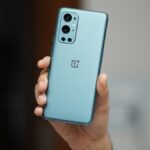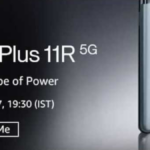
Benchmarks are a bane to the world of smartphones. While they numerically suggest the maximum performance a device can deliver, the numbers typically do not correlate to how it performs in the real world. For example, a device with a 40,000 score in a benchmark suite is not twice as fast as a device with a 20,000 score in the real world. There is no doubt that the recently launched OnePlus 5 is a fast smartphone, thanks to the combination of the Snapdragon 835 chip, 6 or 8GB RAM, fast UFS 2.1 storage, a modest 1080p display, and bloatware-free Android. But alas, the company seems to have faltered yet again in artificially inflating benchmark scores in a bid to showcase a numerical superiority.
XDA Developers, the same publication that had outed OnePlus among other companies early this year for a similar malpractice, found the same issue with its OnePlus 5 review unit. Long story short, the ROM running on the test unit was set to detect when benchmark suites like AnTuTu, Androbench, Geekbench 4, GFXBench, Quadrant, Nenamark 2 and Vellamo would execute.
Upon execution, the phone would boost the CPU to a frequency that it typically wouldn’t run at when using day-to-day applications. The result? The multi-core scores in Geekbench 4, for instance, came in at over 6700 when the hidden build of Geekbench (to check what the phone should realistically score) didn’t post a score above 6500. Although the difference isn’t much, it is probably enough for some unsuspecting reviewers to declare the OnePlus 5 as the performance king among other competing phones.
What’s more interesting — when running GFXBench’s Manhattan Battery test, the OnePlus 5 posted temperatures of 50°C or 122°F, which means the device was uncomfortably hot to hold. Typically, most phones have thermal throttling that won’t let the phone reach that high a temperature in the first place.
A statement from OnePlus suggests that they are “not overclocking the device”, which the folks at XDA find appalling because the ROM does exactly that when those select benchmark apps are run. They are confident that OnePlus will remove this benchmark cheating code from their software in devices they sell to consumers.
Either way, this instance is yet another reminder to not take benchmark scores too seriously when you’re deciding to buy your next smartphone.



















